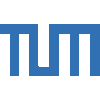- Speaker: Thomas-Peter Fries (Graz University of Technology)
- Date: Jul 02, 2021 11:00
- Location: Online, Zoom
Abstract
The Cut FEM is a fictitious domain method (FDM), herein applied to partial differential equations on manifolds such as they appear, e.g., in the modelling of structural membranes and shells [1,2]. The governing equations are formulated based on the Tangential Differential Calculus (TDC) [3]. The geometries of the structures are implied by the level-set method, prescribed at the nodes of some higher-order background mesh and interpolated in-between.
As for any other FDM, the Cut FEM has to address the following three issues: (1) The numerical integration of the weak form in the (three-dimensional) background elements which are cut by the membrane or shell. Therefore, the zero-level sets of the level-set functions have to be identified and integration points defined. (2) The application of boundary conditions within the background elements which is done based on Nitsche’s method here. (3) The stabilization with respect to shape functions with extremely small supports on the structure. In the context of the Cut FEM for PDEs on manifolds, a stabilization is also required to tackle linear dependencies of the three-dimensional shape functions of the background mesh when applied to the analysis of the (curved) two-dimensional structures. Numerical results show the success of the proposed formulation.
References
[1] T. P. Fries, D. Schöllhammer: A unified finite strain theory for membranes and ropes, Comp. Methods in Appl. Mech. Engrg., 365, 2020. [article]
[2] D. Schöllhammer, T. P. Fries: A Higher-order Trace Finite Element Method for Shells, Internat. J. Numer. Methods Engrg., 122, 1217-1238, 2021. [article]
[3] M.C. Delfour, J. P. Zolésio: Shapes and geometries - Metrics, Analysis, Differential Calculus, and Optimization. SIAM, Philadelphia, PA, 2011. [book]






